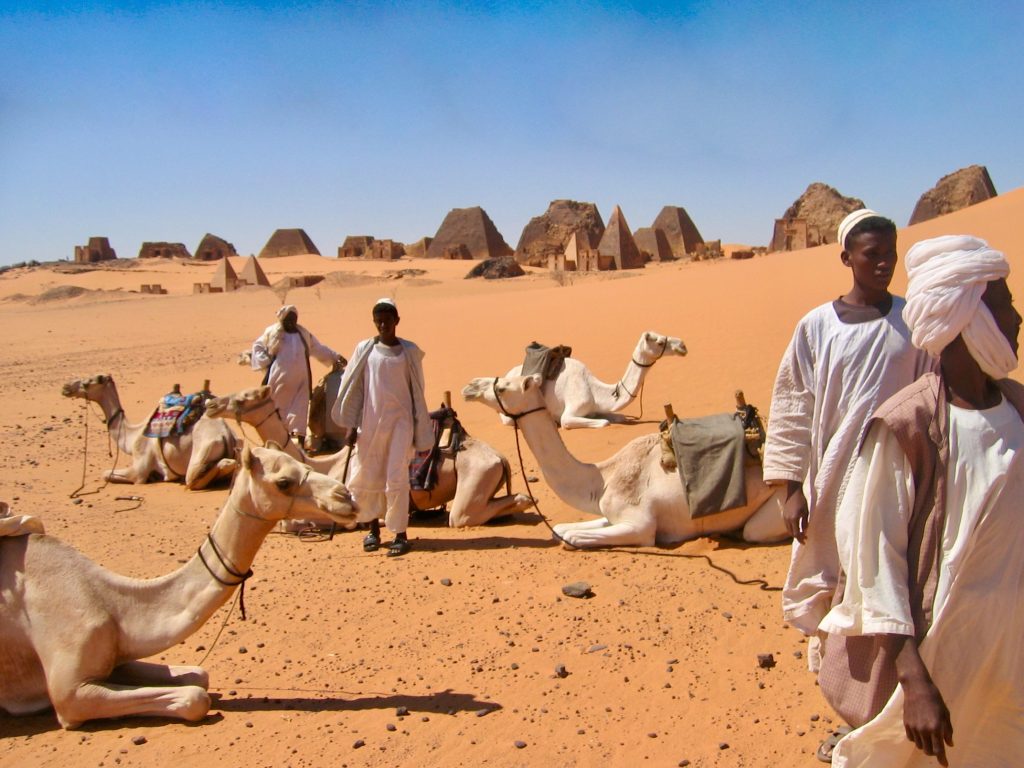
SUDAN
In 1994 I embarked on my first trip into Black mysterious Africa. At that time Sudan used rot be the biggest country in Africa, as Islamic Sudan had not lost yet its Christian brothers from South Sudan. In Sudan’s capital Khartoum, everything felt exotic, the call of the muezzin waking me up each morning in my hotel, the Blue and the White Nile rivers confluencing right here, the white dishdasha dress of the locals snd the dance of the whirling Dervishes in neighbouring Omdurman. From Khartoum I went 200km north to the Nubian pyramids of Meroe, built as a final resting place for the rulers of he fables Kingdom of Kush. I was sitting in the sand besides one pyramid, with not a single other tourist in sight. All pyramids were smaller than their Egyptian cousins but way more numerous.
Photography in Sudan was a challenge, though, in these now unbelievable pre-mobil phone days, particularly in Khartoum. A German diplomat eager to take a souvenir photo from his very own Embassy on his ultimate working day before leaving for good, got arrested by Sudanese security forces positioned opposite of the Embassy, missing his flight home. In the country where illustrous Leni Riefenstahl once photographed „The Last of the Nuba”, photography had become so complicated that even me had to outsmart Sudanese custom official when I was bringing my camera into the country.
Photography in Africa is always a challenge of its own, as American author John Ryle wrote about Riefenstahl’s works: “We feel guilt at the pleasure we take in their beauty and their sensuality. One reason for this is because we know that it is, to a significant extent, the forces unleashed on the world by our own civilisation that are destroying such cultures, even as we celebrate them.”
